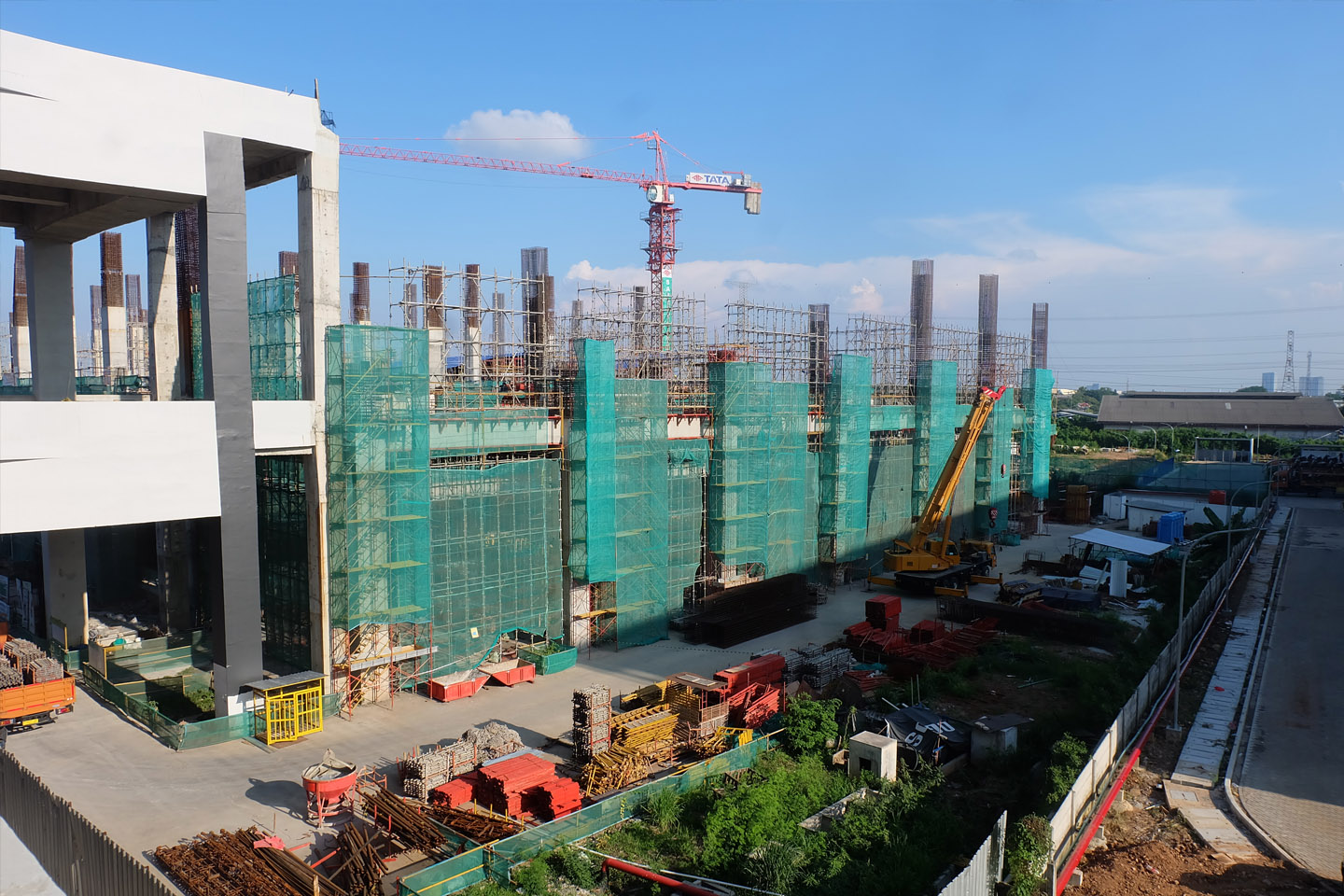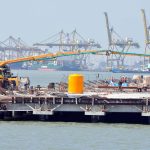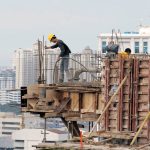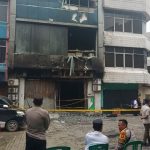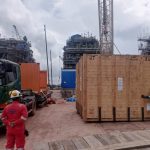Liga Asuransi – Dear readers, how are you? Hope you’re always well. By the way, let’s continue our discussion about one of the important aspects of insurance policies, including the construction insurance policy (CAR/EAR/TPL) which is called deductibles.
I chose this topic because I just have an urgent request from one of our clients asking for a “buyback deductible” insurance policy.
Please note that a buyback deductible is insurance coverage to cover the own risk of a policy whose deductible value is too high.
As you might know, If the deductible is too high, the risk that must be borne by yourself is too heavy and the chance for you of claiming it is small in other words, this is useless insurance.
For your information that this client has purchased a CAR/EAR/TPL insurance policy for their project worth hundreds of millions of dollars. After they selected several offers, they decided to buy from one of the brokers because the premium was the lowest.
Then almost a year after the policy’s inception, they just realized that have just made a big mistake because the policy deductible is extremely high, it’s 10 million dollars anyone accident, which means that if there is an accident worth up to 10 million dollars, they can’t claim it!
Whereas if they choose our quotation where the premium was only slightly higher just by a few thousand dollars, in fact, our deductible was only USD 250,000, which was far lower.
The deductible of 10 million dollars is obviously very high and beyond reasonableness for such a project. However, because the insurance policy has already been issued and the premium has been paid, they can’t do anything else.
One of the solutions is to try to get extra insurance in the form of a “buyback deductible” even though they must incur additional costs, they still want to pay for it. And of course, this is an extra cost.
Frankly, it is not easy to get a buyback deductible insurance because only very few insurance companies are willing to provide this insurance. Even if there is, the insurance premium must be so high. We are working on it now, hopefully, we can find it for our client.
As a senior insurance broker, we would like to share with you more details about how to arrange the deductible properly for your project insurance so you can get the maximum insurance coverage but with the most efficient insurance cost.
We understand that most project managers always try to save project costs but when it comes to the insurance, the premium is not the only factor that you focus on.
You need to make sure that the coverages, benefits, deductibles, limitations, exclusions, and security of the insurers are giving you the best protection.
By the way, if you are interested in this article, please feel free to share it with your colleagues so that they can understand as you do.
What does it mean when you have a deductible?
Before we go further, let’s have a common understanding of what is insurance deductibles. A deductible is an amount you pay out of pocket when you make a claim. Deductibles are usually a specific dollar amount, but they can also be a percentage of the total amount of insurance on the policy.
Sometimes insurance deductibles are also referred to as own risk.
The deductible is subtracted, or “deducted,” from what your insurance pays toward a claim. Deductibles are how risk is shared between you and your insurer.
For example, if you have a deductible of Rp. 10,000,000 and you have an accident that costs Rp. 100,000,000 then you only can claim for Rp. 90,000,000 because your claim will be deducted by your deductible which is Rp. 10,000,000.
Deductibles have been an essential part of the insurance contract for many years. Understanding the role deductibles play when insuring your construction project is integral to getting the most out of your insurance policy.
The larger the deductible, the less you pay in premiums for an insurance policy. In turn, the lower the own risk, the higher the premium. Which one do you choose?
How deductibles work
Usually, the deductible applies each time you file a claim. Deductibles generally apply to property loss and damage.
Trade-off deductible with insurance coverage and premium
One way to save money on a CAR/EAR/TPL insurance policy is to raise the deductible. Therefore, if you’re shopping for insurance, ask about the options for deductibles when comparing policies.
Of course, remember that you’ll be responsible for the deductible in the event of loss, so make sure that you’re comfortable with the amount.
Understanding Deductibles in CAR/EAR/TPL Policy
You need to know that the CAR / EAR / TPL insurance policy has two parts, i.e., section 1 and Section 2.
Section 1 is to cover the risks in the form of physical loss or damage to construction materials, structures, and goods that are part of the project.
Section 2 is to cover lawsuits from third parties. Third parties are companies or individuals who are not part of the project. Like neighbors, passers-by beside the project, or guests.
Deductible for Section I
Within the Munich Re standard insurance policy wordings, there are 2 types of deductibles Natural perils and others.
- Natura perils
Including the risks of Earthquake, Volcanic Eruption, Tsunami, Landslide, Inundation, Subsidence, Strom, Flood, Water damage, Strike Riot Civil Commotion, during maintenance, under Designer’s Risks, including Material Damage of Removal Weakening of support and Vibration.
Usually, the deductible for natural perils is higher than for others, because the potential risks that can occur are very large. After all, the impact of natural disasters is difficult to predict.
Nature’s perils can be ruthless. Across the globe, homes, businesses, projects, and whole communities are frequently devastated by windstorms, wildfires, earthquakes, floods, and other perils.
The impact and likelihood of these natural hazards are increasing, often due to man-made behaviors. More than ever, we need to be aware of our exposure to natural hazards and take action to mitigate the risks.
Climate change impacts
. What risks should construction industry business leaders be most concerned about, and how can they best prepare for a greener future?
The physical risks of climate change are those immediate threats that come from the physical environment. Flooding, hurricanes, drought, and wildfires –are all symptoms of the climate crisis, and can all cause physical damage to people, property, and transport links. Major weather events have increased in direct correlation to the warming climate.
We usually recommend the deductible amount to our client based on the type of work, location, project management plan, team, project design, construction plant and equipment, and more.
The range of deductibles is between USD 10,000 to USD 250,000 depending on the size of the project. In addition, we also add 10% of the claim amount.
- Other Losses
What is meant by other losses is damage and loss that is not caused by natural perils, such as accidental damage, explosions, lightning, riots, evil intentions of others, being hit by construction tools, falling construction materials, and others.
The range of deductibles is between USD 5,000 to USD 50,000 depending on the size of the project. In addition, we also add 10% of the claim amount.
Deductible for Section II – Third Party Liability
Deductibles for Section II are divided into two, the first is for property damage or material damage and the second is injury, illness, and death.
The deductible for material damage of section II is almost the same as the deductible for other losses under Section I.
The range of deductibles is between USD 5,000 to USD 50,000 depending on the size of the project. In addition, we also add 10% of the claim amount.
Whilst the deductible for bodily injury, illness, and death for the third party is nil, no deductible. All claims from a third party will be paid in full up to the limit of liability stated in the policy.
Why there is no deductible for bodily injury and death? It’s because human life is invaluable, but the basis of settlement is based on actual medical expenses or reasonable compensation.
List of World Major Construction Failures
We always remind our clients that “accidents can happen anywhere and anytime”. Below are the major accidents in the world.
- Shanghai in 2009
A newly built but vacant apartment building collapsed, killing one worker. An investigation found that dumping excavated soil on a nearby riverbank had caused ground instability causing the building to collapse.
- Hyatt Regency Walkway Collapse, Kansas City
In 1981, 114 people were killed and over 200 injured when two walkways at the Hyatt Regency hotel in Kansas City, fell four floors onto the lobby below where a dance competition was being held. The catastrophe was considered the deadliest structural collapse in US history until the 2001 World Trade Centre attack.
- Sampoong Department Store Collapse, South Korea
In 1987, work began on the Sampoong Department store in Seoul, South Korea. Originally planned to be an apartment block, the developers changed their minds and decided to build a department store instead, which meant that some support columns had to be left out to make room for escalators.
The developers also wanted to add a fifth floor for restaurants. Many building companies refused to make the changes, stating that they were unsafe but eventually the developer found a company that would build what they wanted.
- Savar Building, Bangladesh
In 2013, the eight-story Savar building collapsed killing more than 1,100 people. The building was first built without authorization and converted from commercial use to industrial use. Three floors were added without permission and substandard construction material was used.
- The Molasses Disaster, Boston
In January 1919 a huge molasses tank containing as much as 2,300,000 US gal collapsed. The collapse caused an enormous wave of molasses between 8 and 15 ft (2.5 to 4.5 m) high, moving at 35 mph (56 km/h).
The force of the molasses wave was so powerful it broke into the girders of the adjacent Boston Elevated Railway’s Atlantic Avenue structure and lifted a train off the tracks. Nearby, buildings were swept off their foundations and crushed. 21 people were killed along with 150 injured.
- Mecca Crane Collapse, Saudi Arabia
In 2015, a crane toppled over at Mecca’s Grand Mosque killing 111 pilgrims during mass. There were strong sandstorms in the region the week before and reports of high winds. Liebherr reports suggested that the boom should have been lowered to avoid the high winds.
Why for construction insurance you should use the services of an Insurance Broker?
Construction risks are not easy and high-risk jobs. Not many insurance companies are willing to provide insurance coverage.
It requires extensive insurance knowledge and experience in engineering insurance and knowledge of risk management so that insurance coverage is maximized.
The best way to arrange insurance for the construction work is to always use the services of an official insurance brokerage company registered with the Financial Services Authority (OJK).
Insurance brokers design insurance programs that best suit your project’s risk conditions. Find an insurance company that can cover the risk with competitive premium rates.
An important benefit of using the services of an insurance brokerage firm is that you will get help in resolving claims for free. The insurance broker also acts as your advocate for the settlement of insurance claims.
One of the insurance companies with extensive experience in the field of construction insurance in Indonesia is L&G Insurance Broker.
For all your project insurance needs, please contact L&G now!
Sources:
- https://www.iii.org/article/understanding-your-insurance-deductibles
- https://www.fountaininjurylaw.com/ten-most-common-construction-accidents/
- https://www.investopedia.com/ask/answers/071515/why-do-insurance-policies-have-deductibles.asp
- https://www.zurich.com/en/knowledge/topics/climate-change/how-climate-change-will-impact-business-everywhere#:~:text=In%202019%2C%20the%20UN’s%20International,change%2C%20either%20directly%20or%20indirectly.
—
Looking for Insurance Products? Don’t Waste Your Time and Contact Us Right Now
L&G HOTLINE 24 HOURS: 0811-8507-773 (Call – Whatsapp – SMS)
website: lngrisk.co.id
E-mail: customer.support@lngrisk.co.id
—


